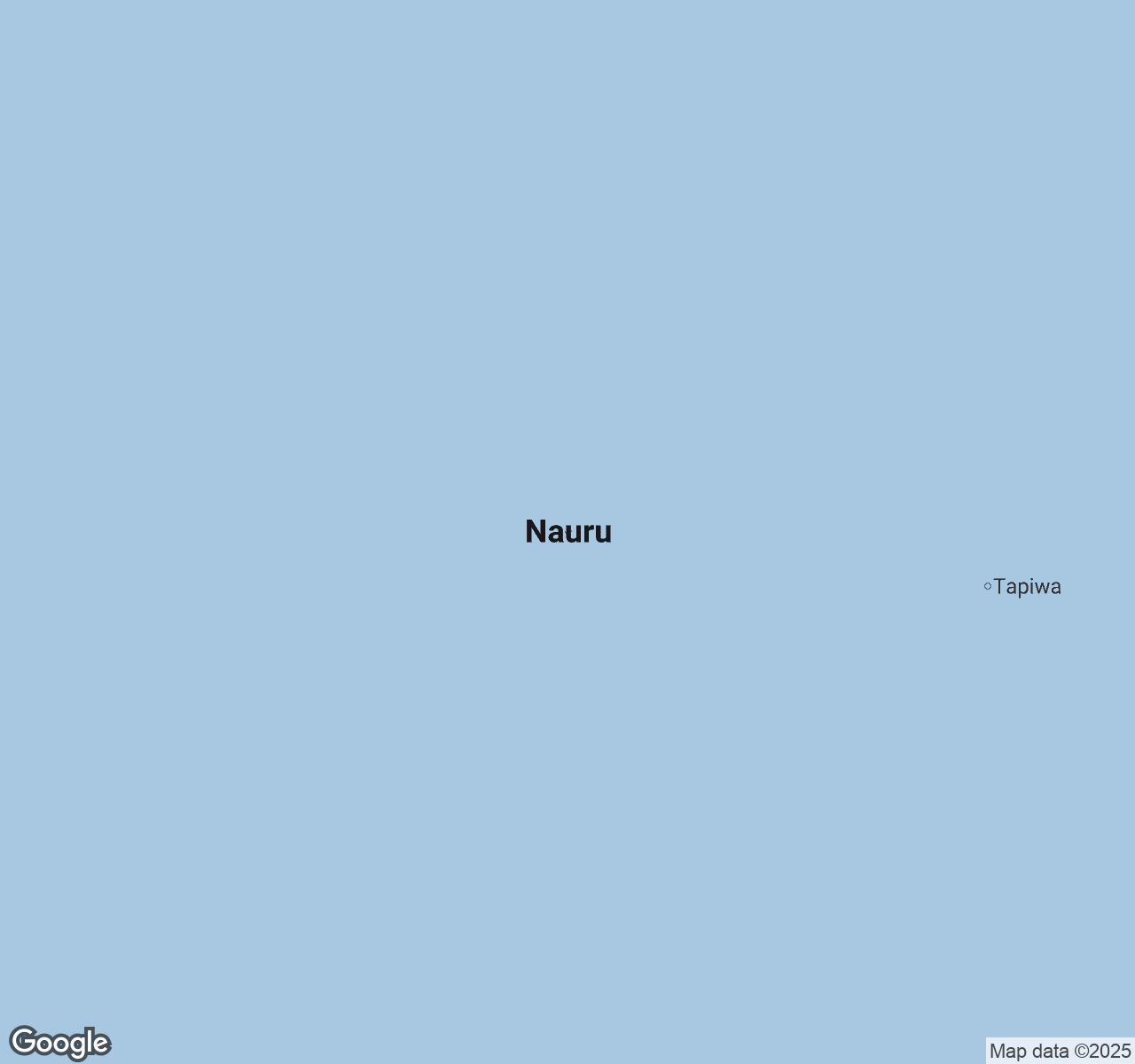
Things to Do in Nauru
Discover the best of Nauru
Plan Your Trip
Essential guides for timing and budgeting
Top Things to Do in Nauru
Discover the best activities and experiences. Book now with our trusted partners and enjoy hassle-free adventures.
Your Guide to Nauru
About Nauru
In the vast expanse of the Pacific Ocean lies Nauru, the world's smallest island nation—a 21-square-kilometer jewel that defies expectations at every turn. This phosphate-rich great destination carries the weight of both ancient Polynesian heritage and modern transformation, where traditional outrigger canoes share lagoons with remnants of colonial mining operations. The island's dramatic interior, scarred yet hauntingly beautiful from decades of phosphate extraction, creates an otherworldly landscape of coral pinnacles and hidden pools that photographer's dreams are made of. Along the pristine coastline, where fewer tourists have walked than have summited Everest, you'll discover untouched beaches where frigatebirds soar overhead and the rhythm of Pacific waves provides the only soundtrack. Nauru offers something increasingly rare in our connected world: true isolation and authenticity. Here, every sunset feels personal, every conversation with locals reveals layers of resilience and warmth, and every moment reminds you that some of Earth's most profound beauty exists in its most unexpected corners.
Travel Tips
Transportation: No rental cars exist on Nauru—arrange airport pickup through your accommodation in advance. The island has one circular road (19km) perfect for walking or cycling. Locals offer informal taxi services; negotiate fares beforehand as no meters exist.
Money: Australian dollars are the official currency. Bring sufficient cash as no ATMs exist and credit cards are rarely accepted outside the airport and hotel. Small denominations are preferred for local purchases and services.
Cultural Respect: Dress modestly when visiting Nauru Congregational Church or government buildings. Always ask permission before photographing people or traditional fishing activities. Sunday is strictly observed—most businesses close and beach activities should be respectful and quiet.
Food Safety: Stick to the hotel restaurant or Od-N-Aiwo Hotel for reliable meals. Local fish is excellent when freshly caught. Avoid tap water—bottled water is available at limited stores. Fresh fruit from local vendors is generally safe.
When to Visit
Nauru enjoys a tropical climate year-round with temperatures consistently ranging from 26-30°C (79-86°F). The dry season (May-October) offers the most comfortable conditions with lower humidity, minimal rainfall (50-100mm monthly), and refreshing trade winds. This period sees 20-30% higher accommodation rates due to optimal weather. The wet season (November-April) brings higher humidity, frequent afternoon showers, and monthly rainfall of 200-300mm, though temperatures remain pleasant. Hotel rates drop 25-35% during this period, making it ideal for budget travelers who don't mind occasional tropical downpours. Nauru Day (January 31st) is the island's most significant celebration, featuring traditional dancing, feasting, and cultural displays—book accommodation well in advance for this period. Angam Day (October 26th) offers another cultural experience with fewer crowds. The island receives fewer than 200 tourists annually, so 'peak season' is relative. May-July provides the perfect balance of excellent weather and reasonable prices. First-time visitors should consider June-September for optimal conditions, while photographers will love the dramatic skies of the wet season months. Cultural enthusiasts should time visits around the January or October celebrations for authentic local experiences.

Nauru location map